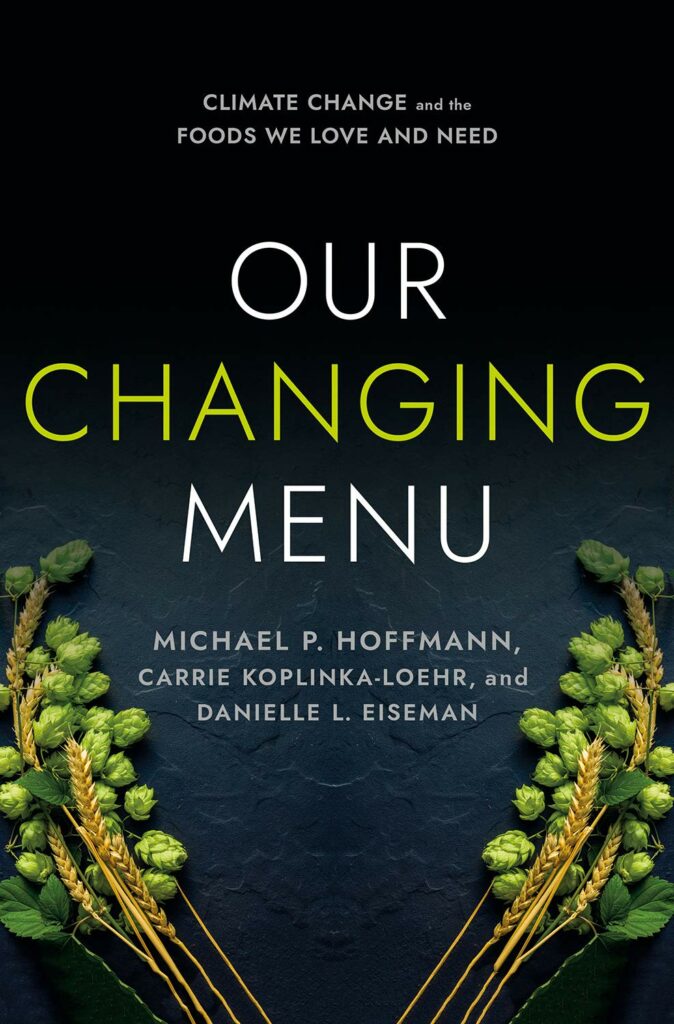
By Michael P. Hoffmann, Carrie Koplinka-Loehr and Danielle L. Eiseman
Comstock Publishing Associates (Cornell University Press), 2021
264 pages, paperback, $21.95
As a chocolate lover and morning coffee drinker, I worry about the impacts a changing climate will have on my favorite foods. Those same concerns are what inspired Michael Hoffmann, an entomologist studying biological control, writer Carrie Koplinka-Loehr, and Danielle L. Eiseman, who once worked as a chef, to collaborate on this book. They structure the book like a menu — from pre-dinner drinks to salads, mains, sides and desserts — to explain what is happening and what we can do about it.
First they set the table. Instead of linens and silver, they set out three big challenges the world faces: an increasing population; preservation of agricultural land; and nourishing the poorest people. They explain how the impacts on water, soil, plants and pests are altering our menu “as unprecedented climate changes make it more difficult to maintain or increase food production.”
Imagine a holiday backyard barbecue, or a tailgate party, without … beer! Water shortages and warming temperatures affect everything from growing hops to the brewing process itself. As for wine, grapes are sensitive to temperature and depend on a period of winter chill to set fruit. What will happen to our vineyards as winters grow warmer?
Like grape growers, I’ve had to figure out how to deal with increasingly hot summers and I’m sure I’m not the only gardener in the Northeast creating shade frames for tender greens. To highlight how the warming climate has changed what’s in our salad, the authors focus on two fundamental salad ingredients: avocados and olive oil. Who knew avocados are so picky?
Moving on to the main dish, we may have to rethink our love affair with meat. Not only is climate change affecting the animals we depend on for protein but raising livestock contributes to climate change. Overfishing, pollution and ocean acidification are taking a toll on seafood. Scientists and farmers are working to keep meat on the menu, according to the authors. New breeds of heat-tolerant chicken and cattle could be developed, ranchers could embrace regenerative agriculture and silvopasturing, and lesser-known fish could be introduced to the menu.
Even if you give up meat for beans and rice (or barley or quinoa) you’re not in the clear. Lack of water and increased temperatures will affect rice harvests, having a huge impact on global food security. A warmer climate means more pests and fungi attacking wheat, and potato growers may have to move north or to higher altitudes to cultivate their crops.
Fortunately, the final section of the book focuses on solutions. The authors advocate for “climate-smart agriculture,” which can look a lot like organic farming. Possible solutions include building soils (using cover crops and low-till), planting a diversity of crops, rotating crops to minimize pests, planting for pollinators, and adopting new technologies. Even low-tech ideas, such as locating small farms in urban areas, could help by reducing transportation distances. The final chapter outlines seven steps everyone can take to tackle climate change.
You can learn more about climate and food at their website ourchangingmenu.com.
Sue Smith-Heavenrich, Candor, New York
